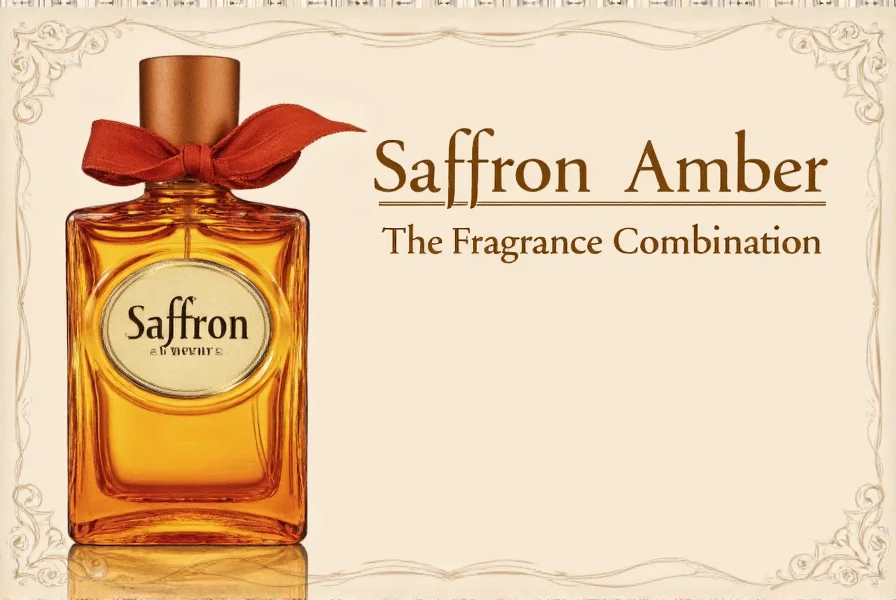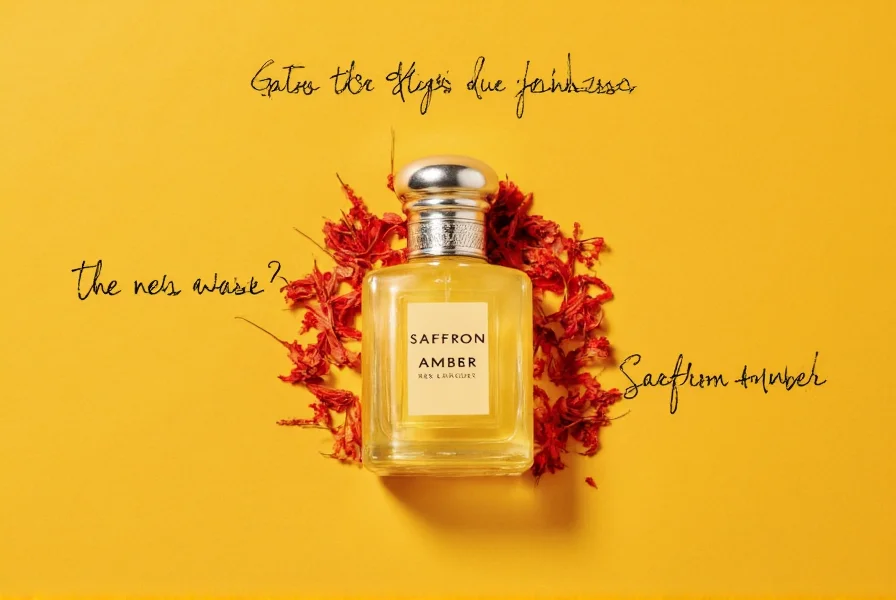Understanding Saffron and Amber as Perfume Notes
While saffron amber isn't a single material, this combination has become increasingly popular in modern perfumery. Saffron, derived from the Crocus sativus flower stigma, contributes a unique spicy, leathery note with subtle honeyed and metallic undertones. In contrast, amber in perfumery typically refers not to the fossilized resin but to a warm, sweet accord often composed of labdanum, vanilla, and benzoin.

The Scent Profile of Saffron Amber Combinations
When properly balanced, saffron amber fragrances create a sophisticated olfactory experience. The initial impression often features saffron's distinctive spicy warmth, sometimes with subtle metallic or iodine-like nuances that quickly mellow into the richer amber base. This combination works particularly well in oriental and woody fragrance families.
Professional perfumers note that the quality of saffron used significantly impacts the final scent. High-quality saffron extracts provide a more complex, nuanced aroma compared to synthetic alternatives, which can sometimes smell overly medicinal or one-dimensional. Similarly, the composition of the amber accord determines whether the fragrance leans more toward sweet, resinous, or powdery characteristics.
Historical Context and Modern Applications
Though the specific "saffron amber" terminology is relatively recent in mainstream perfumery, the combination of spice and resinous notes has ancient roots. Traditional Middle Eastern and Indian attars often featured similar combinations using locally available materials. Modern perfumers have refined this pairing, creating more balanced interpretations that appeal to contemporary sensibilities.
| Characteristic | Saffron Contribution | Amber Contribution | Combined Effect |
|---|---|---|---|
| Aromatic Profile | Spicy, leathery, honeyed | Sweet, balsamic, warm | Complex spicy-sweet warmth |
| Longevity | Moderate (top to middle note) | Excellent (base note) | Extended wear with evolving character |
| Seasonal Suitability | Fall, Winter | All seasons (warmer months in lighter concentrations) | Primarily cooler months, adaptable formulations for year-round wear |
Evaluating Quality in Saffron Amber Fragrances
When assessing saffron amber fragrances, consider several factors that indicate quality craftsmanship. First, examine how the saffron note integrates with the amber accord—high-quality formulations avoid the medicinal or overly sharp characteristics that can occur with inferior saffron extracts. The transition between notes should feel seamless rather than abrupt.
Another indicator of quality is the fragrance's evolution on skin. Premium saffron amber compositions typically demonstrate excellent sillage and longevity while maintaining balance throughout their wear. The saffron should mellow gracefully into the amber base without either note dominating unpleasantly. Natural ingredient-based formulations often provide more nuanced development compared to those relying heavily on synthetic alternatives.
Complementary Notes and Creative Blending
Skilled perfumers enhance saffron amber combinations with carefully selected supporting notes. Common complementary elements include:
- Woody notes like sandalwood or cedar that provide structure
- Floral accents such as rose or jasmine that soften the spice
- Additional resins like myrrh or frankincense for complexity
- Subtle citrus top notes that brighten the initial impression
The most sophisticated saffron amber fragrances create a harmonious balance where no single note overwhelms the composition. Some contemporary interpretations incorporate unexpected elements like leather, tobacco, or even aquatic notes to create distinctive variations on this classic combination.
Practical Considerations for Saffron Amber Fragrance Selection
When choosing a saffron amber fragrance, consider your personal chemistry and intended use. These combinations typically work well for evening wear and cooler seasons, though lighter concentrations can be appropriate for daytime. Test the fragrance on your skin rather than paper strips, as saffron amber compositions often transform significantly when interacting with individual skin chemistry.
Pay attention to how the fragrance develops over time—quality saffron amber scents should maintain their integrity through multiple stages of evaporation. The initial burst of saffron should gradually reveal the deeper amber notes in a smooth transition. Avoid formulations where the saffron note becomes unpleasantly sharp or medicinal as the fragrance settles.











 浙公网安备
33010002000092号
浙公网安备
33010002000092号 浙B2-20120091-4
浙B2-20120091-4